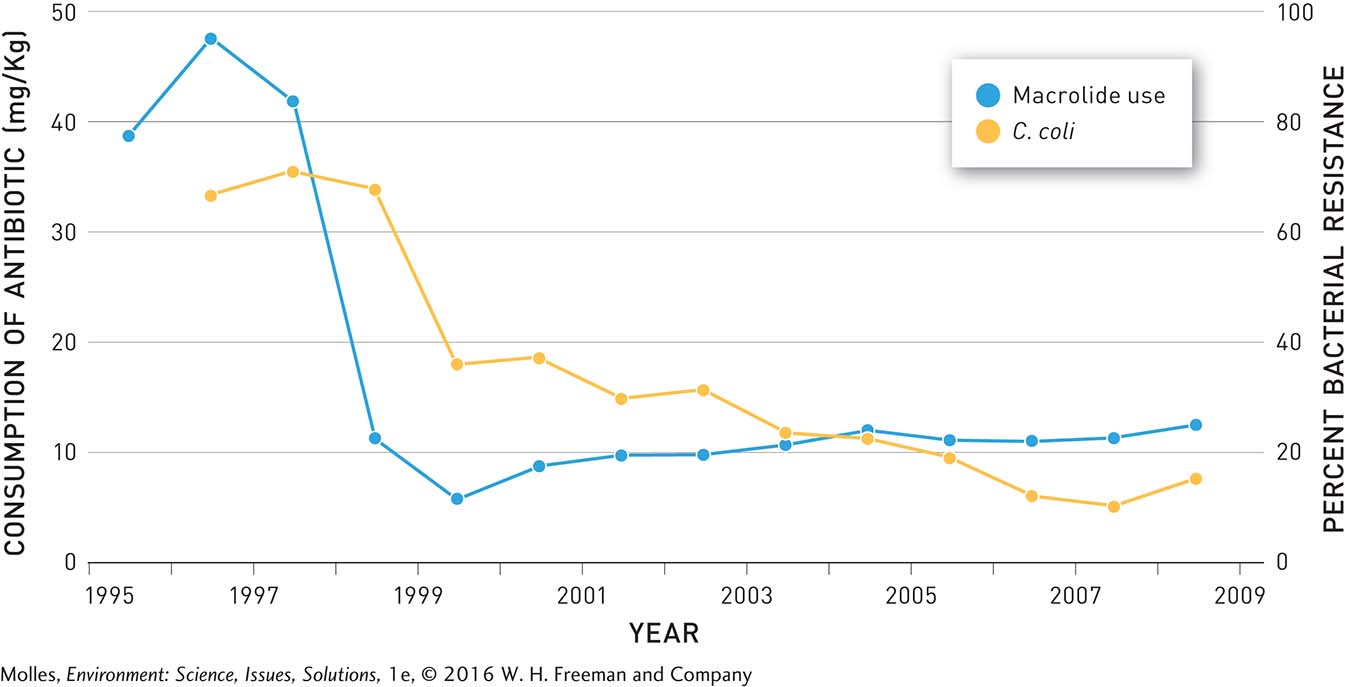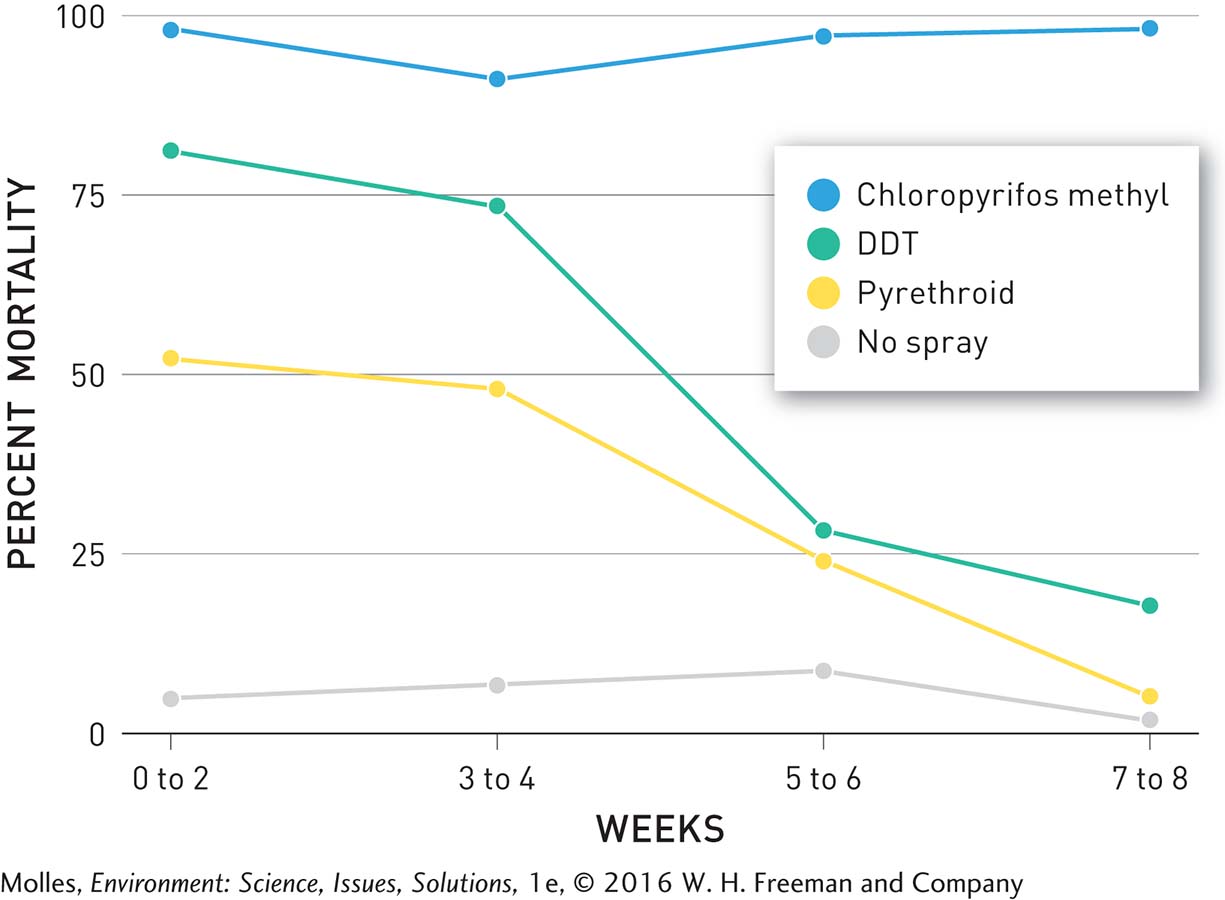11.9 Evolutionary biology can help manage antibiotic and insecticide resistance
The pathogens and insect disease vectors, such as mosquitoes, that we are trying to control evolve in response to selection we create by using antibiotics or insecticides. Adopting common-
Prevention and Appropriate Treatment
Because the likelihood increases that bacteria will evolve resistance to antibiotics each time we use such treatment, it pays to try to prevent infections in the first place. For example, good hygiene in medical care facilities and in the home can reduce the spread of infectious disease. Reducing the rate of infection decreases the need for treating patients. Having to treat fewer patients lowers selection pressure on pathogenic bacteria for antibiotic resistance. When treatment with antibiotics is necessary, appropriate treatment is essential. Antibiotics should be used only when they can benefit the patient and should target a specific pathogen. In addition, the antibiotic must be taken in the appropriate dosage and for the full length of time prescribed for effective treatment.
Lower Antibiotic Use in Livestock Production
Reducing the use of antibiotics in livestock production can also lower the prevalence of antibiotic resistance among bacteria in meat products and animal waste without compromising the welfare of the industry. For example, the amount of antibiotics given during the production of a kilogram of meat in Denmark, the world’s leading exporter of pork, is one-

Why might some agricultural interests oppose changing the use of antibiotics in meat production in the United States?
To combat disease, Danish livestock producers now rely less on antibiotics and more on preventative hygiene—

Surveillance Is Essential for Managing Resistance

What role can the business community play in efforts to control malaria in Africa and elsewhere?
Surveillance, or monitoring, of pest and pathogen populations aimed at detecting the appearance and prevalence of resistance is essential to any program aimed at limiting antibiotic or insecticide resistance. As we saw in Chapter 7, monitoring of pest populations is critical to effective Integrated Pest Management in agricultural settings (see page 221), and it is just as important to controlling disease vectors. A surveillance program that detects the appearance of resistance early permits a timely and effective response. An early response, such as switching to an alternative antibiotic or pesticide, is essential to prevent resistance from becoming too frequent in pest and pathogen populations.
352
Diversifying Chemical Treatments
Developing a diversity of antibiotics and insecticides with different modes of action is crucial for combating resistance. In their attempts to control malaria vectors, researchers have identified several new insecticides that are highly effective against populations of malaria-

353
Think About It
Why should there be an evolutionary cost to antibiotic or insecticide resistance?
Is there likely to be any chemical defense against pathogenic bacteria or insect vectors of disease that will not eventually lead to resistance in the target population? Why or why not?
There are significant benefits to using large amounts of antibiotics in livestock production. What are the risks to people and the environment?
11.7–11.9 Solutions: Summary
A risk is anything with the potential to cause us harm or loss or put us in danger. Risk management practices include four basic steps: identification of the hazard, dose–
The precautionary principle can be used as a tool for making better health and environmental decisions. It aims to prevent harm from the outset rather than manage it after the fact. Modern approaches to disease control go beyond vaccines and medicines to include cooperation among health organizations and governments, innovative research, education, and awareness of culture and values. The health risks associated with the bushmeat trade may be reduced by public health campaigns that emphasize the dangers of harvesting certain animals. Insecticide-